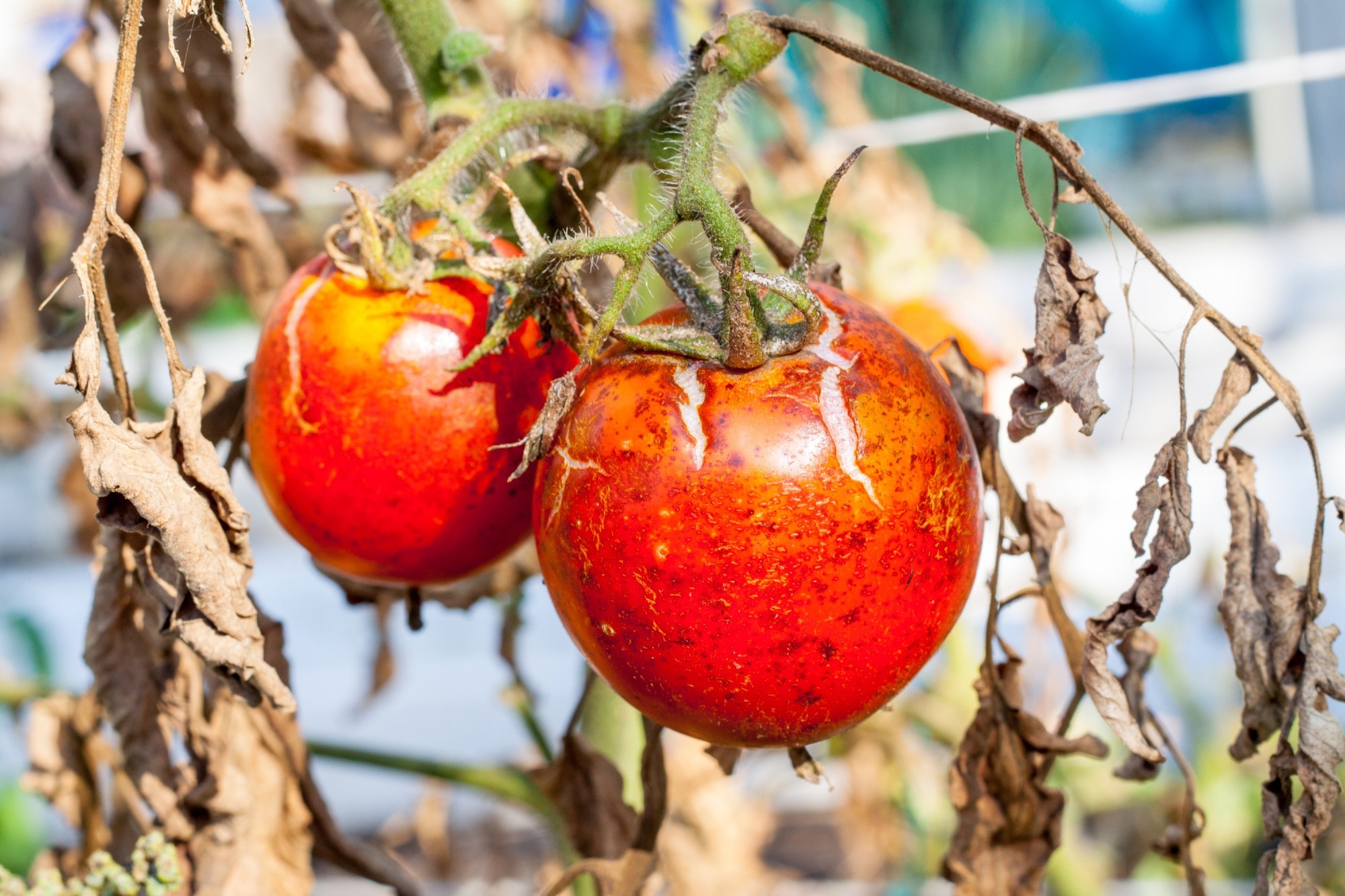In a recent paper published in the journal Applied Sciences, researchers introduced an enhanced tomato disease and pest detection model based on You Only Look Once version 5 (YOLOv5n). They leveraged advanced AI technology to improve detection accuracy, reduce model size, and enhance computational efficiency. The key innovations included the use of the Efficient Vision Transformer for feature extraction, a novel upsampling operator, and Wise-Intersection over Union (IoU) for regression. Experimental results demonstrated significant accuracy improvements and reduced model complexity by making this method well-suited for early tomato disease and pest detection.
 Study: YOLOv5n-VCW: Advancing Tomato Pest and Disease Detection with Enhanced Object Detection. Image credit: Mironmax Studio/Shutterstock
Study: YOLOv5n-VCW: Advancing Tomato Pest and Disease Detection with Enhanced Object Detection. Image credit: Mironmax Studio/Shutterstock
Background
Tomatoes are a vital global vegetable crop with significance in nutrition, economics, and ecology. They offer essential nutrients, support the economy, and contribute to carbon reduction. Tomatoes also serve as valuable research subjects. However, they face pest and disease challenges that impact yield. Early detection is crucial for effective control measures to emphasize the need for a real-time detection model and to enhance tomato yield and quality.
Computer vision has made significant strides in agriculture, mainly in the field of plant disease recognition. Deep learning-based approaches have gained traction for their improved speed and accuracy compared to traditional methods. Researchers have previously developed various models to enhance pest and disease detection in crops, which include YOLOv2, ResNet, and MobileNet. These models have addressed issues like imbalanced datasets and computational complexity. However, there is ongoing work to create even more efficient and accurate lightweight models for this purpose.
Proposed Method
This paper focuses on enhancing the YOLOv5 object detection algorithm, known for its speed and simplicity. It delves into the architecture of the model by utilizing YOLOv5n for its real-time target detection capabilities. This choice balances detection accuracy, model complexity, and speed, making it ideal for practical applications. This paper proposes key improvements including replacing the original backbone with the Efficient Vision Transformer (EfficientViT), addressing issues related to computational costs, and enhancing scalability. Additionally, it introduces Content-Aware ReAssembly of Features (CARAFE) for superior feature map upsampling. These enhancements collectively empower YOLOv5 to excel in real-time object detection.
EfficientViT emerges as a powerful addition by offering lower computational and memory costs without compromising accuracy. Its lightweight multi-scale attention mechanism (MSA) captures features efficiently to enhance the model's adaptability to resource-constrained devices. CARAFE, the new upsampling operator, is used to improve the feature map quality by enhancing the performance of YOLOv5. These modifications make YOLOv5 an attractive choice for real-time object detection tasks by combining accuracy and speed for practical applications.
Experimental Results
The experiments were conducted on an Ubuntu 20.04 system with 80 GB of RAM, an Intel Xeon Platinum 8358P CPU, and an NVIDIA GeForce RTX2080 Super GPU. PyTorch 1.11.0 and CUDA 11.5 were employed for deep learning, and evaluation metrics included mAP50 and mAP50:95 for detection accuracy, FLOPs for computational complexity, and the number of parameters as a measure of model complexity. The study employed the recommended YOLOv5 training parameters from MS COCO dataset experiments.
To assess the improvements, this paper introduced EfficientViT as the backbone network, CARAFE for upsampling, and WIoU Loss for bounding box regression. Ablation experiments evaluated each improvement separately, and comparisons with other object detection algorithms demonstrated the advantages of the proposed YOLOv5n-VCW algorithm in terms of accuracy, model size, and detection confidence.
The key findings include replacing the backbone network with EfficientViT reduced model complexity while slightly improving accuracy; upgrading upsampling to CARAFE enhanced accuracy with minimal added complexity; and switching to WIoU Loss improved accuracy without affecting model size or speed. The YOLOv5n-VCW algorithm outperformed others in terms of accuracy, model simplicity, and computational efficiency, which particularly included resource-limited scenarios. However, the study's focus on tomato pest detection and the use of a single dataset limits its generalizability, showing the significance of further exploration of the algorithm in various object detection tasks and real-world conditions.
Contributions of this Paper
The main contributions of the paper are summarized as follows:
YOLOv5n-VCW Model: The paper introduces a novel tomato pest and disease detection model, YOLOv5n-VCW, which improves upon the YOLOv5n architecture by integrating Efficient Vision Transformer (EfficientViT) for enhanced feature extraction. It also incorporates the Content-Aware ReAssembly of FEatures (CARAFE) upsampling algorithm and replaces the Complete-IoU (CIoU) Loss with Wise-IoU (WIoU) Loss for more accurate detection.
Superior Detection Performance: YOLOv5n-VCW outperforms various object detection models, including YOLOv5n, YOLOv5s, YOLOv5m, YOLOv5l, YOLOv5x, SSD, and Faster R-CNN by achieving impressive mAP50 and mAP50:95 scores of 98.1% and 84.8%, respectively. This represents a substantial improvement over existing models, demonstrating its effectiveness in tomato pest and disease detection.
Efficiency and Scalability: YOLOv5n-VCW reduces model parameters to 1.9 million and lowers computational complexity by 1.2 GFLOPs compared to YOLOv5n. These optimizations enhance the efficiency of the model by making it well-suited for deployment on resource-constrained devices while maintaining high detection accuracy.
Conclusion
To sum up, this paper presented an enhanced algorithm for tomato pest and disease detection, namely YOLOv5n-VCW. It leverages EfficientViT, CARAFE upsampling, and WIoU Loss to improve accuracy while reducing model complexity. Experimental results on a tomato dataset demonstrate exceptional performance with minimal parameters and computational costs. YOLOv5n-VCW outperforms other detection algorithms and holds promise for practical applications. Future research aims to deploy the model on resource-constrained devices and expand its use to detect various plant pests and diseases.